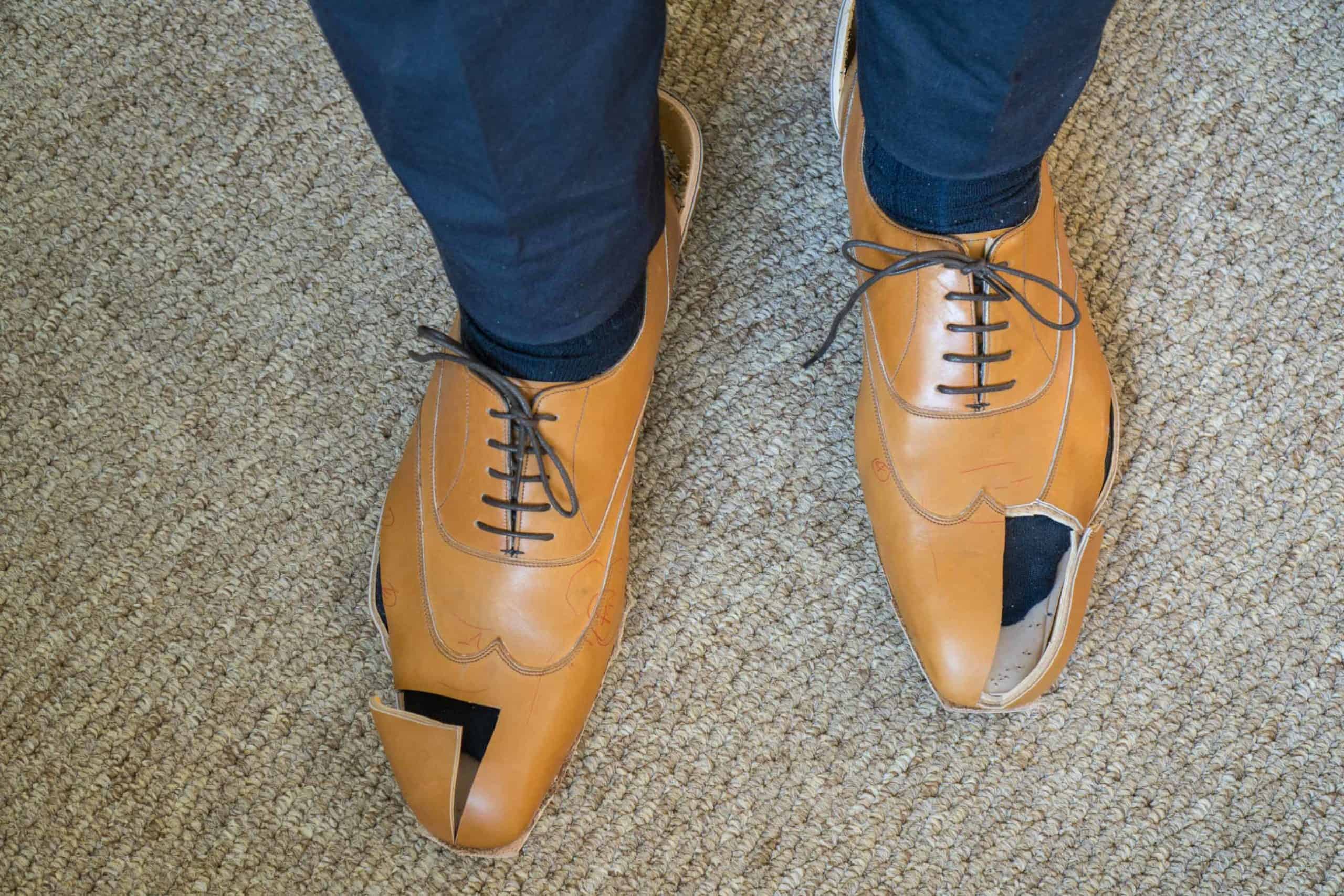When it comes to footwear, one essential element that often gets overlooked is the amount of toe space in shoes. Whether you’re shopping for casual kicks, dress shoes, or athletic sneakers, understanding toe space can make or break your comfort level and overall footwear experience. This comprehensive guide will explore how much toe space you should consider in shoes, along with tips, case studies, pros and cons, and FAQs to help you choose the right fit.
Understanding Toe Space in Shoes
Shoe toe space, often referred to as “wiggle room,” is the area in front of the toes where they can move freely without being cramped. Adequate toe space is vital for foot health, comfort, and performance, especially for those who stand for long hours or engage in physical activities. When shopping for shoes, finding that sweet spot in terms of toe space can significantly enhance your walking experience and contribute to overall foot health.
Why is Toe Space Important?
Having enough toe space in your shoes is essential for several reasons:
- Comfort: Shoes that fit properly in the toe box ensure that your toes aren’t crammed together, making for a more enjoyable wearing experience.
- Prevention of Foot Problems: Insufficient toe space can lead to issues such as bunions, corns, and hammertoes, which can be painful and require medical attention.
- Performance: For athletes or anyone engaged in physical activity, having the right toe space allows for better balance and agility.
- Style: Well-fitting shoes can enhance your style and boost your confidence.
How Much Toe Space is Enough? A General Guideline
While individual preferences may vary, a general guideline is to have about one thumb’s width of space (approximately half an inch) between your longest toe and the end of the shoe. This allows your toes to have enough room to move freely, especially during activities like walking or running.
Factors Influencing Ideal Toe Space
Several factors can influence the ideal amount of toe space in your shoes, including:
- Foot Shape: Some people have wider feet, while others have narrower ones. The toe box should accommodate your foot’s shape.
- Shoe Type: Athletic shoes typically require more toe space compared to dress shoes, which are usually more fitted.
- Activity Level: If you’re highly active, you might prefer a looser fit for better mobility.
- Personal Preference: Ultimately, comfort is subjective, and personal preference plays a significant role.

Real-World Footwear Experiences
To illustrate the importance of toe space, let’s look at some real-world experiences from shoe enthusiasts and professionals. A freelance graphic designer, Amy, shared her struggle with finding comfortable shoes while working long hours at her desk. She often wore shoes with a narrow toe box, leading to painful blisters and calluses. After consulting with a podiatrist, Amy started choosing shoes with a wider toe box and a thumb’s width of space. The difference in comfort was significant, allowing her to focus on her work rather than foot pain.
Case Study: Runners and Toe Space
Another interesting case involves professional runners. Most avid runners know that the right fit can mean the difference between a successful race and an injury. After testing various brands and styles, a group of marathon runners discovered that shoes with one thumb’s width of toe space not only improved their comfort but also significantly reduced the risk of blisters and black toenails during races. This led to a shared consensus in the running community about the essential need for adequate toe space, emphasizing that what might feel like a minor detail could actually influence overall performance.

Comparison of Toe Space in Popular Shoe Styles
Different types of shoes have varying toe box shapes and sizes. Below is a comparison table detailing toe space available in some popular footwear styles.
| Shoe Type | Typical Toe Space | Recommended Fit | Pros | Cons |
|---|---|---|---|---|
| Athletic Sneakers | 1 inch | More room for movement | Comfort, support, breathability | Bulky, can be heavy |
| Running Shoes | 0.5 to 1 inch | Thumb width from longest toe | Shock absorption, flexibility | May wear out faster |
| Casual Sneakers | 0.5 to 0.75 inches | Moderate space for comfort | Style, versatility | Less formal |
| Dress Shoes | 0.25 to 0.5 inches | Fitted, but not cramped | Elegance, style | Less cushioning, can be uncomfortable |
| Sandals | Varies | Loose fit preferred | Breathability, ease of wear | Less support |

Tips for Finding the Right Amount of Toe Space
Finding the right amount of toe space in shoes might seem daunting, but with these tips, you’ll be well on your way to comfortable footwear.
1. Measure Your Feet
Start by measuring your feet professionally or at home. Ensure you measure both the length and width, as this can impact your toe space significantly. Use a Brannock device or a tape measure to get accurate dimensions.

2. Try Shoes on Later in the Day
Your feet naturally swell throughout the day, so try on shoes in the late afternoon or evening. This can help ensure that you select a size that accommodates foot expansion.
3. Wear Appropriate Socks
When trying on shoes, wear the type of socks you typically wear with that footwear. This can make a significant difference in the fit and feel.

4. Walk Around
Don’t just stand still. Walk around the store and pay attention to how your toes feel in the shoes. Are they cramped, or do they have room to wiggle? This is key to finding the right fit.
5. Pay Attention to the Toe Box Shape
Different shoe brands and styles have varying toe box shapes. A rounded toe box is often more accommodating for wider feet, while a pointed toe may restrict toe movement.

Product Highlights: Recommended Shoes with Good Toe Space
To help you find the perfect pair, here are some recommended shoe styles that offer ample toe space:
- Asics Gel-Kayano: Known for their comfortable fit and excellent toe space, perfect for runners.
- New Balance 990: Offers a wide toe box with great cushioning for everyday wear.
- Saucony Triumph: Renowned for its roomy toe box, making it ideal for long-distance running.
- Clarks Desert Boots: Casual yet stylish, with enough toe space for comfort throughout the day.
- Birkenstock Sandals: Adjustable straps ensure a custom fit with plenty of toe room.
Pros and Cons of Too Much or Too Little Toe Space
When evaluating toe space in shoes, it’s crucial to consider the pros and cons of both too much and too little room.

Too Much Toe Space
- More freedom of movement, which can be comfortable for some.
- Reduces the risk of blisters from friction caused by tight shoes.
- Better airflow, reducing moisture buildup.
Cons:
- Can lead to instability and lack of support.
- Feet may slide around, causing discomfort and potential injury during activity.
- A risk of developing calluses if the foot moves excessively inside the shoe.
Too Little Toe Space
- Provides a snug fit, enhancing stability.
- May offer a sleeker profile, especially in dress shoes.
Cons:
- Can cause foot pain, blisters, and other deformities.
- Limits natural toe movement, which is essential for balance and foot health.
- Increases pressure on the toes, potentially leading to issues like bunions.
Frequently Asked Questions (FAQs)
1. How can I tell if my shoes have enough toe space?
When trying on shoes, ensure you have about a thumb’s width of space between your longest toe and the end of the shoe. Your toes should be able to move slightly without feeling cramped.
2. Is toe space essential for high heels?
Yes, even in high heels, some toe space is necessary to prevent foot pain and injuries. Look for heels with a rounded toe box or platforms to create additional space.
3. What should I do if my shoes are too tight?
If your shoes are too tight, consider trying a larger size, using shoe stretchers, or opting for brands known for wider toe boxes.
4. Can I modify my current shoes for better toe space?
Yes, you can use shoe stretchers, removable insoles, or consult a cobbler for adjustments to improve toe space.
5. Do different brands have different toe space measurements?
Absolutely! Different brands use unique lasts (the mold shoes are made on), leading to variations in toe box shapes and sizes. Always try shoes on before purchasing.
6. How does toe space relate to foot health?
Improper toe space can lead to various foot ailments such as bunions, hammertoes, and even back pain due to misalignment. Ensuring proper toe space is an integral part of maintaining foot health.
7. Is there a difference in toe space for children’s shoes?
Yes, children’s shoes often come with more toe space to allow for growth and movement. Always check for adequate space when buying shoes for kids.
8. How often should I check my shoe size?
It’s a good practice to check your shoe size at least once a year, or whenever you notice discomfort or changes in your foot structure.
9. Can orthotics affect toe space in shoes?
Yes, orthotics can take up space in the shoe, so it’s essential to choose shoes with enough toe room to accommodate both the orthotics and your toes comfortably.
Conclusion: Finding Your Perfect Fit
Toe space in shoes might seem like a small detail, but it plays a significant role in your overall comfort and foot health. Whether you’re strolling down the street or running a marathon, ensuring you have the appropriate amount of toe space can enhance your experience. Remember to consider your unique foot shape, activity level, and personal preferences when shopping for your next pair of shoes. Happy shoe hunting!